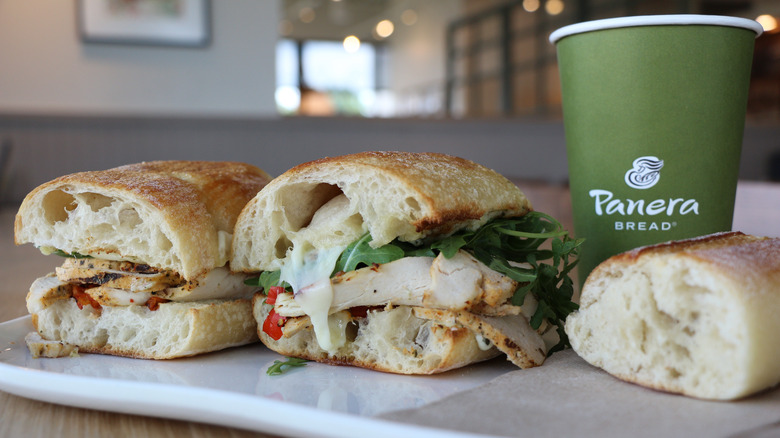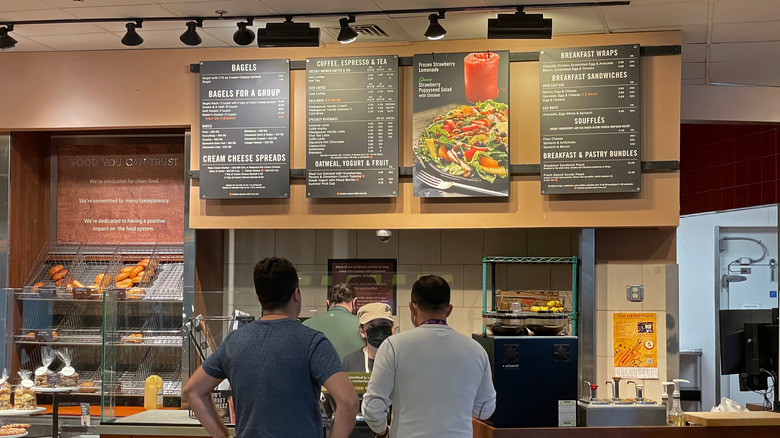The Fast Food Menu Trend That Started With Panera
CORRECTION 12/9/22: A previous version of this article stated Panera is owned by YUM! Brands. Parena's parent company is JAB.
When it comes to eating out in restaurants, ignorance is often bliss. When we open a restaurant menu and look at all the delicious choices, we don't always want to know the healthiness of each item. Whether ordering a salad or fried chicken, it's sometimes more enjoyable to eat without thinking about your dish's nutrition (or lack thereof).
And yet, it is important to know what you're eating, as restaurant food is known to be overall less healthy than home-cooked meals. Restaurant food is often high in oil, fat, and sugar content and served in large portions with extras like bread, high-calorie drinks, and more. Studies have found that restaurant food can even be as bad for you as eating fast food, and Americans consume 200 more calories on average when eating out (via CBS). In 2014, the U.S. Food and Drug Administration (FDA) stated that chain restaurants with 20 or more locations needed to show caloric and nutritional information to customers, which went into effect in 2018.
And while we now have greater transparency with fast food nutritional information, there was one restaurant that was ahead of its time in this area.
Panera was the first to display calorie counts
Panera began listing its calorie information as early as 2010. This was partly because it saw the writing on the wall, with lawmakers taking steps toward requiring the information to be public. But Panera also noted customers' positive reactions when it disclosed the calories in their Asian sesame chicken salad, which gave people more information before ordering. It sounded like a win-win. Scott Davis, Panera's chief concept officer, said calorie transparency had no effect on the corporation's sales. "We realized that actually, it was a good thing for our business, not a negative thing," Davis told CNBC. The chain also demonstrated its commitment to healthier eating by eliminating artificial trans fats in 2005 and getting rid of artificial ingredients in 2017, Delish shares.
Although it's now a legal requirement for larger chains to share nutritional information, not everyone loves the change. In fact, some people are even calling for the end of calorie counts on menus, claiming that the transparency hasn't helped the obesity epidemic at all. The FDA was more flexible with restaurants during the COVID pandemic, but other than that, the policy has remained unchanged.

